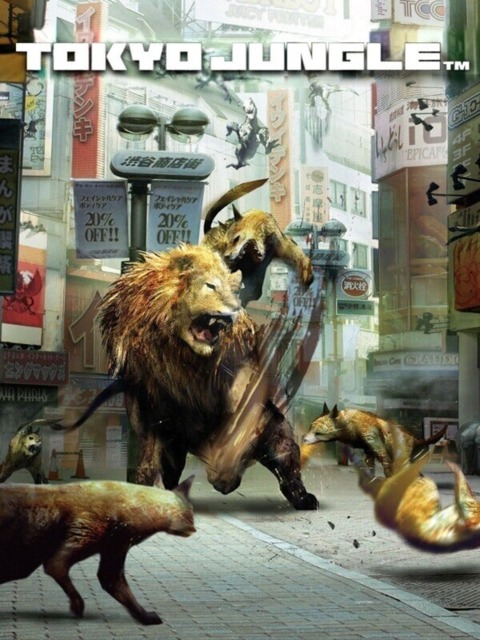Natural Selection
This game has a story. I'm going to talk explicitly about it. Be warned.
While Tokyo jungle is set in the 2030s, its real plot begins 200 years later when humanity has nearly wiped itself out with pollution and general stupidity. Rather than accept that fate, scientists create a time machine to transport current humans into the past and, presumably, not fuck up quite as badly. However, as the game explains, because of the "law of conservation of mass," the same amount of material going back in time must be sent forward in time. Thus, future humans think they are clever and transport 2030 humans forward first. Unfortunately, the gap between those humans leaving and the future humans coming back must be filled, and the time stream fills it with ravenous dinosaurs.
Or something like that.
It's silly pseudo science, but it leads to poignancy. This game ultimately asks you whether you care about wild animals or the human animal more. It takes you through family and clan dynamics in the story mode, through constant sustainability tasks in the survival mode, and asks you if that dangerous yet understandable world is worth keeping, the world without humans.
I begin with story because there is something special here. In the story mode, the game constantly has the player play as every side of every conflict, becoming conqueror then conquered then a third party consecutively. It makes you feel powerful, a killer of many, and powerless, a dethroned king run out of his kingdom. It gives you sympathy for the grazers who must flee at the sign of pointed teeth and the predators who have a pack to feed and limited animals to kill and eat.
Tokyo Jungle, unlike hundreds of stories (in any medium) before it, retains narrative consistency even as it indulges in science fiction and animals in camisole dresses. That is to be commended.
Do not fear, though, that the systems and actions the player encounters and makes are not just as valuable. Each different animal not only has different attributes, it feels different to play. The small, fluttering chick must move slowly and carefully and become a chicken as quickly as possible to have a chance. The rabbit is faster, still easy prey, but mates with alacrity. The pomeranian and the wolf have the same timing-based stealth kill attack, but one is a yipping mite while the other can lope across the zones knowing it can kill or run from most any animal it encounters. The variety is large and meaningful.
The gauges to watch, hunger, stamina, life, and time, give one a great simulated feeling of the evolutionary rat race. At any moment, you are juggling the random challenges the game gives you, the need to eat to live, the need to kill or hide to escape harm, the need to mate to keep your bloodline going, and the need to mark and explore to have more food and space rather than dying alone in an emptied zone. Everything is randomness and necessity, just like nature.
Subtleties you never suspected arise through further play. You find that predators who attacked you at first, once you beat back and kill their kind, will run from you in the future, as if they have some species-wide consciousness. You discover the underground and third story networks that are so easy to ignore if you just run right down the street. You move from timid and small (literally in animal and emotionally as player) to confident and large, as you now know exactly how easy it is to run from that once terrifying lion or whether you should spend time on that flower or that plant.
Essentially, the story and the systems combined to make me feel the excitement, grind, and terror of being an animal in a simulated but authentic wild. It may be quite easy to kill tens of larger predators once you learn the attack timing and you will grow to hate toxic rain for interrupting your glorious ascent. The hyena story stealth missions are frustrating, poorly check pointed, and unintuitive. The game looks muddy and blurry.
But I have no trouble overlooking those minor flaws to see the actual masterclass in game design here. All should play it.
